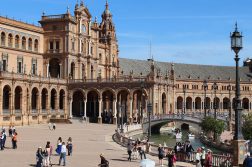The Spanish Education System
In Spain, which is a member of the European Higher Education Area (EHEA, EEES in Spanish), there are three different levels of study at University:
Grado (Bachelor’s Degree): 180-240 ECTS credits in three to four academic years.
Máster (Master’s Degree): 60-120 ECTS credits in one to two academic years. There are two types: “oficial” (official) and “propio” (unofficial postgraduate programs, subject to internal quality control).
Doctorado (Doctoral Studies): Minimum of 60 ECTS plus a research project or doctoral thesis, approximately three-four years.
What are ECTS credits?
ECTS stands for European Credit Transfer and Accumulation System. It is used throughout the European Higher Education Area.
One ECTS credit is equivalent to 25-30 hours of work completed by the student, including hours of tuition, self-study and practical work. One Canadian credit is more or less equivalent to two ECTS credits.
Per semester, the average number of ECTS for a B.A. or Master’s Degree is 30.
There are two semesters, usually September – January and February – June.
Why study in Spain?
- Higher education in the EHEA (48 countries) is standardized: degrees get reciprocal recognition.
- Great flexibility, with many electives.
- Tuition costs are usually cheaper than in Canada.
Where can I find further information?
www.ehea.info/ (European Higher Education Area)
sepie.es/internacionalizacion/estudiar.html (General information for international students studying in Spain)
www.educacion.gob.es/notasdecorte/busquedaSimple.action (What you can study, and where)








Discussion6 Comments
I see you don’t monetize your blog, don’t waste your traffic,
you can earn extra cash every month because you’ve got hi quality content.
If you want to know how to make extra money, search for: Mrdalekjd methods for $$$
thank you
meri pour vos efforts
thanks a lot
very nice
I’m so grateful you took the time to write this. It helped me a lot in my work study.